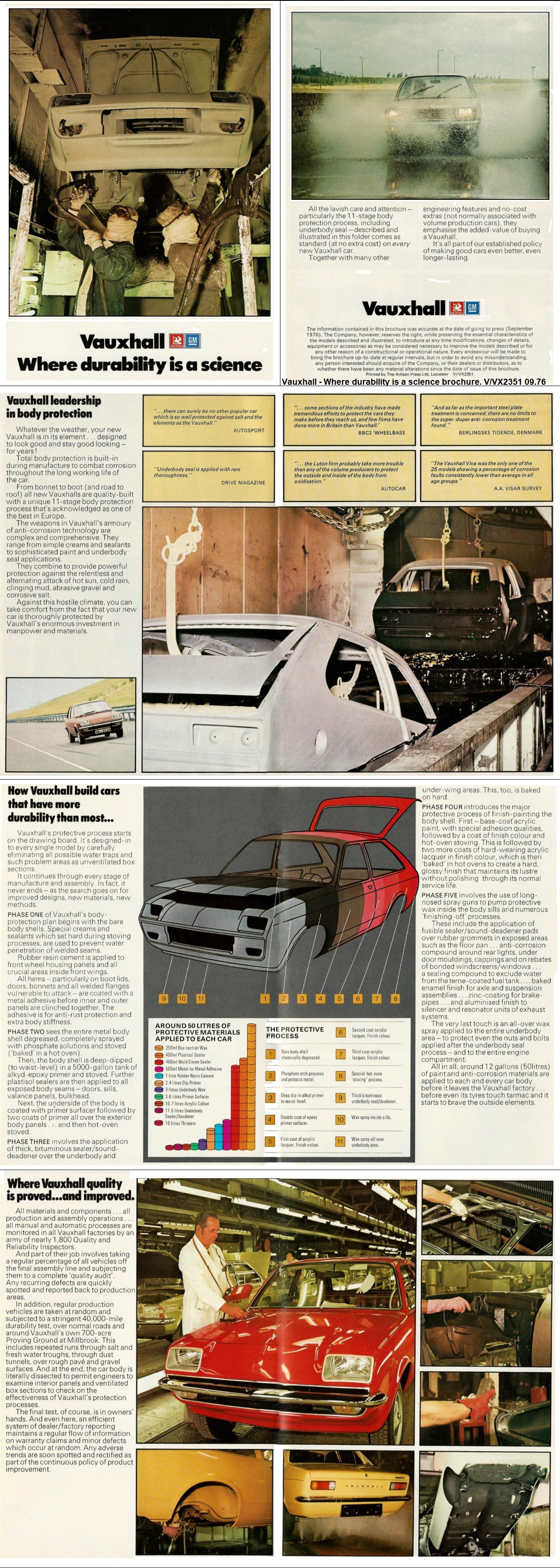

1. VAUXHALL - MILLBROOK PROVING GROUND BACKGROUND:
Millbrook proving ground has had a somewhat chequered history as one of the largest, and most comprehensive, vehicle testing grounds in Europe. It was built on rather low grade agricultural land in an area called Lidlington, which was to be the name of the test centre originally. The layout of Millbrook was based on the General Motors Millford Michigan proving ground in the USA, the world’s first automotive proving ground opened in the 1920s, and is probably where the name Millbrook was derived from. Vauxhall purchased the 700-acre site in January 1968 and it took £3.5m and three years to complete. The previous test facilities at Chaul End were kept for a while but eventually all testing was transferred to Millbrook. Located near the M1 motorway and Milton Keynes, Millbrook is about 18 miles from Luton and the first stage was opened in December 1969 with the second phase completed late in 1970. Due to the geographical needs of a full testing centre, including both hills and flat land, the traditional choice of former RAF airfields was ruled out and many different sites around the UK were surveyed before the location at Millbrook was chosen, which also benefited from being close to Luton, Vauxhall's main production site at the time.
2. VAUXHALL - MILLBROOK PROVING GROUND CONSTRUCTION & FACILITIES:

Some of the construction facts & figures:
Construction work began in April 1968. 2,600,000cu.yds of earth
were moved to sculpt the necessary track features into the
existing but barren landscape. At the height of the
earth-moving work 51 machines were moving 125,000cu.yds of earth
per week. Many ammonites (shell like fossils around 150 million
years old) were unearthed during the excavations. 3,500 tons of
hand laid granite blocks formed the 0.9-mile Belgian pave circuit.
73,000 tons of aggregate and 9,000 tons of cement went into the
5-lane high-speed circuit. 20,000cu.yds of hard-core, 1,450 tons of
cement, 4,500 tons of aggregate and 25,000 tons of sand were used
to make the 1-mile straight. The circular steering pad required
6,000cu.yds of hard-core, 1,300 tons of cement and 6,000 tons of
aggregate. Over 200,000 trees were planted including both conifers
and indigenous deciduous varieties, helping nature to return to an
area that for many years had been notably lacking in natural beauty
and also assisting the security of the facility. In 1988 the
test facility was transferred to a brand-new company, Millbrook
Proving Ground Ltd, as part of Group Lotus which GM had recently
taken over. Millbrook then began to offer its facilities to non-GM
companies as well, this was because Lotus carried out chassis
engineering for many car makers and not just various divisions of
General Motors. The entire staff successfully faced the enormous
challenge of transitioning from a department of a major vehicle
manufacturer to a nimble customer focused organization in the tough
world of automotive consulting. Millbrook had successfully been
'privatized'. This seemingly stable position did not last long
however, in 1993 following the sale of Lotus by General Motors to
Malaysian car maker Proton, Millbrook was separated from Group
Lotus by transferring its shares to GM Holdings UK Ltd. Even though
in GM ownership again the Millbrook continued to flourish as an
independently managed business, focusing investment on increasingly
high technology areas of vehicle design such as crash mitigation,
emissions control and component durability. The core track-based,
whole vehicle durability, business was also supported with new
facilities and steady profitable growth. General Motors Engineering
Millbrook was established in 1999 as a brand-new part of the
facility located on the Millbrook Proving Ground Site. A group of
about 65 Vauxhall engineers and support personnel work in unison
with the GME Engineering Operations in Russelsheim. The Vauxhall
team led by Gerry Baker - Vauxhall's Vehicle Dynamics Manager -
test and re-calibrate where necessary the suspension and steering
settings for Vauxhall vehicles in the UK. Also, there is another
part of the same team which undertake conversions of Vauxhall cars
and vans for public service authorities such as the Police force,
Ambulance Service and the armed forces to the exact requirements
needed.
The centre provides vehicle test and development facilities including:
1. Vehicle and system assessment
2. Powertrain development
3. Safety testing.
These are staffed by fully trained engineering teams who work with non-GM manufacturers on their test and development programmes.
Millbrook has a wide range of different types of test tracks. The most prominent are the:
1. Hill Route - divided into three sections or loops which contain
progressively steeper gradients and tighter corners. Sometimes seen
in films, particularly the "ski-jump" where it is very easy for
vehicles to become airborne, such as James
Bond.
2. Outer and Inner Handling (or City Course) circuits - extremely
technical twisty circuits used for extreme testing of vehicle
handling characteristics.
3. High Speed Bowl - a two miles (3 km) circular banked
circuit used for higher speed testing.
The proving ground maintains a high standard of security and secrecy to protect the commercial interests of its customers. Public access is not generally permitted and the facility is hidden from view by belts of trees. Limited supervised access to the facilities is available through some driver training organizations.

















